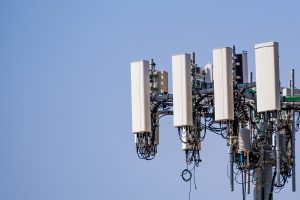5G is a revolutionary technology set to push the boundaries of performance on global connectivity. For internet of things (IoT) use cases across industries and businesses requiring real-time communication, low latency and high data rates, 5G has unlimited potential.
Essentially, from smart cities to remote health and industry 4.0, 5G is set to unlock new applications that will improve the quality of life of everyone around the world.
But what is 5G and what exactly is the hype surrounding the new bands? Let’s take a closer look below.
What is 5G and how is it different from 4G?
Briefly, 5G is the latest evolution of cellular wireless connectivity with improved capacity, coverage, and even lower latency. When compared to 4G technology, 5G offers many improvements, but relies on the similar fundamentals to communicate with devices.
What makes 5G so different from 4G is the new levels of performance it offers including:
- High reliability like wired connections
- Ultra-low latency of less than 20ms
- High global data rate
In the same way 4G boosted the smartphone era, 5G will power new technologies across the enterprise. This is great news especially for IoT use cases. Shaping new opportunities for both businesses and consumers alike.
Different 5G frequency bands help users receive the best possible performance based on the distance between the source and the device.

What Are the 5G Bands?
5G is divided into 3 frequency bands – low, mid, and high – with each band equipped with different capabilities.
- Low band – less than1GHz with greater coverage but lower speeds
- Mid band – between 1GHz to 6GHz offers a balance of speed and coverage
- High band – between 24GHz to 40GHz offers significantly higher speeds but less coverage
5G bands are more flexible than prior generations. After all, it can use frequencies across all 3 bands to achieve the best possible performance. They can even use multiple frequencies simultaneously to maximize both coverage and reliability.
This flexibility is vital as it helps eliminate dead zones by broadcasting signals in the best possible frequencies. This is based on the environment and distance from the source.
Many building materials also reflect or block high-frequency signals, posing a challenge in cellular networks. Due to the flexibility of transmitting across several bands, 5G can combat this by transmitting via high, mid, and low-band ranges using multiple small cells.
5G networks can also use mixed band transmissions. For example, an IoT sensor used to monitor temperatures of sensitive packages as it travels across the world. Using low-band frequencies for long-distance communication in rural areas, switching to the high band once that signal is closer to its source destination.
5G bands help eliminate dead zones by broadcasting signals in the best possible frequencies given the environment and distance from the source signal.
Let’s unpack at some of the more technical aspects and use cases for each 5G band – low, mid and high.

Low Band
Low band 5G transmits around 600 to 700MHz, providing widespread coverage across a large area. While it offers the broadest coverage, it transmits at slower speeds of around 50 Mbps.
Typically, the low band is used to provide nationwide coverage for mobile consumers and on the IoT side, it aids businesses in communicating with rural sites where roll outs are both inconvenient and expensive.
Low band 5G is used in the green energy industry to communicate with wind farms. Smart sensors are also used in agriculture farmlands to monitor crops and even cattle from long distances.

Mid Band
Mid-band 5G typically transmits around 1.7GHz to 2.5GHz, offering a good balance between transmission speeds and coverage. Speeds in the mid band hover in the range from 100 to 900 Mbps.
The mid band is the most used in 5G as it is designed to cover areas across suburbs and cities. Even at the lower speeds, the mid band is often just as fast as home internet, making it ideal for a variety of smart city use cases.
Many college campuses and commercial parks also rely on the mid band to provide continuous service to use cases such as air quality sensors, HVAC systems, smart meters, traffic monitoring, waste management, and more.

High Band
Finally, we have the high band 5G which operates at 24GHz and beyond, offering the fastest speeds but across shorter distances compared to the low and mid bands. High band 5G typically provides 1 Gbps speeds and to give it some context, at this speed, you could download your favourite TV series in a few minutes, and your favourite podcasts in a matter of seconds.
High data rate and ultra-low latency allows companies to transmit large amounts of information reliability in near real time such as the streaming of a ‘live’ sports event. In IoT, sensors use the high band to relay environmental and safety insights in real time, enabling a quick reaction to emerging issues.
Closing thoughts
5G brings a series of possibilities for cellular connectivity and will pave the way for rapid IoT growth.
If you’re interested to learn more about 5G, cellular connectivity and ZARIOT products in general, book a meeting with one of our industry experts today.
Or better yet, try out our SIMs today to find out more about how our award-winning cellular IoT technology can provide solutions for your business.











